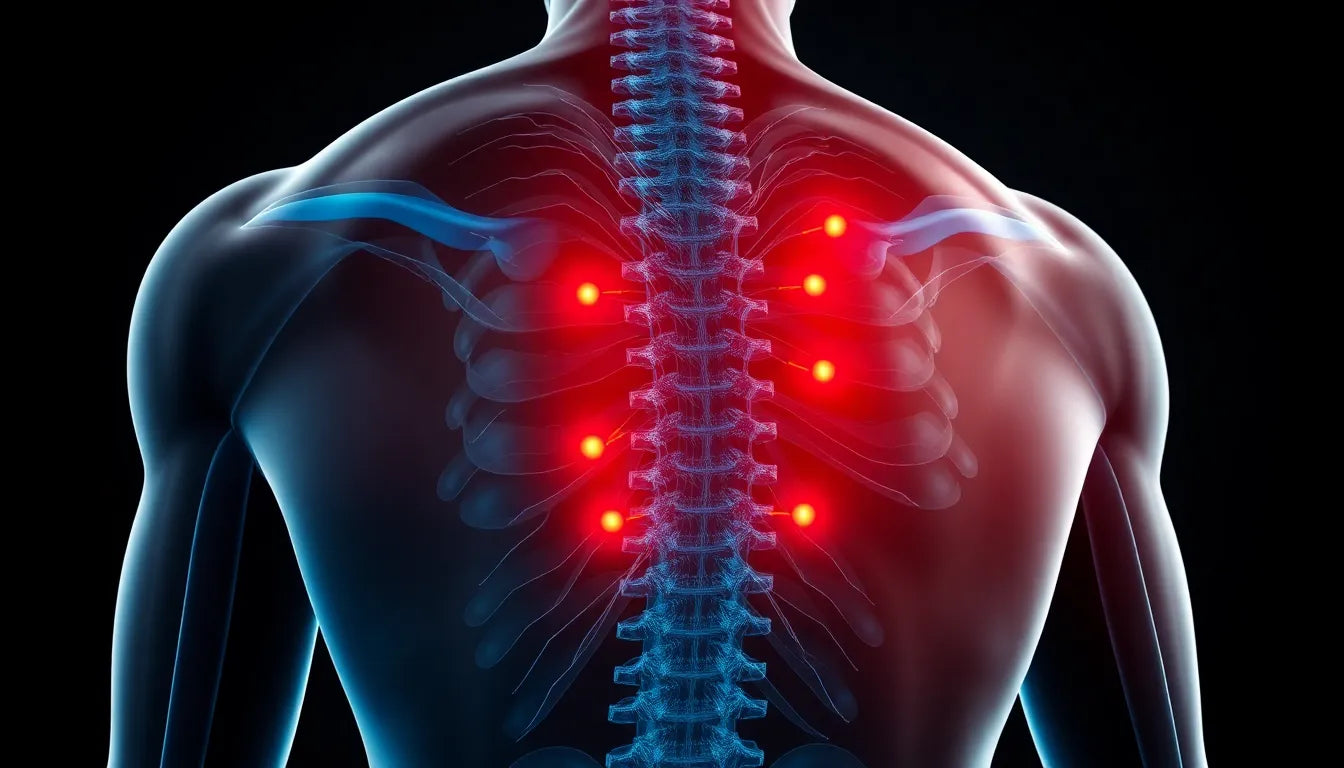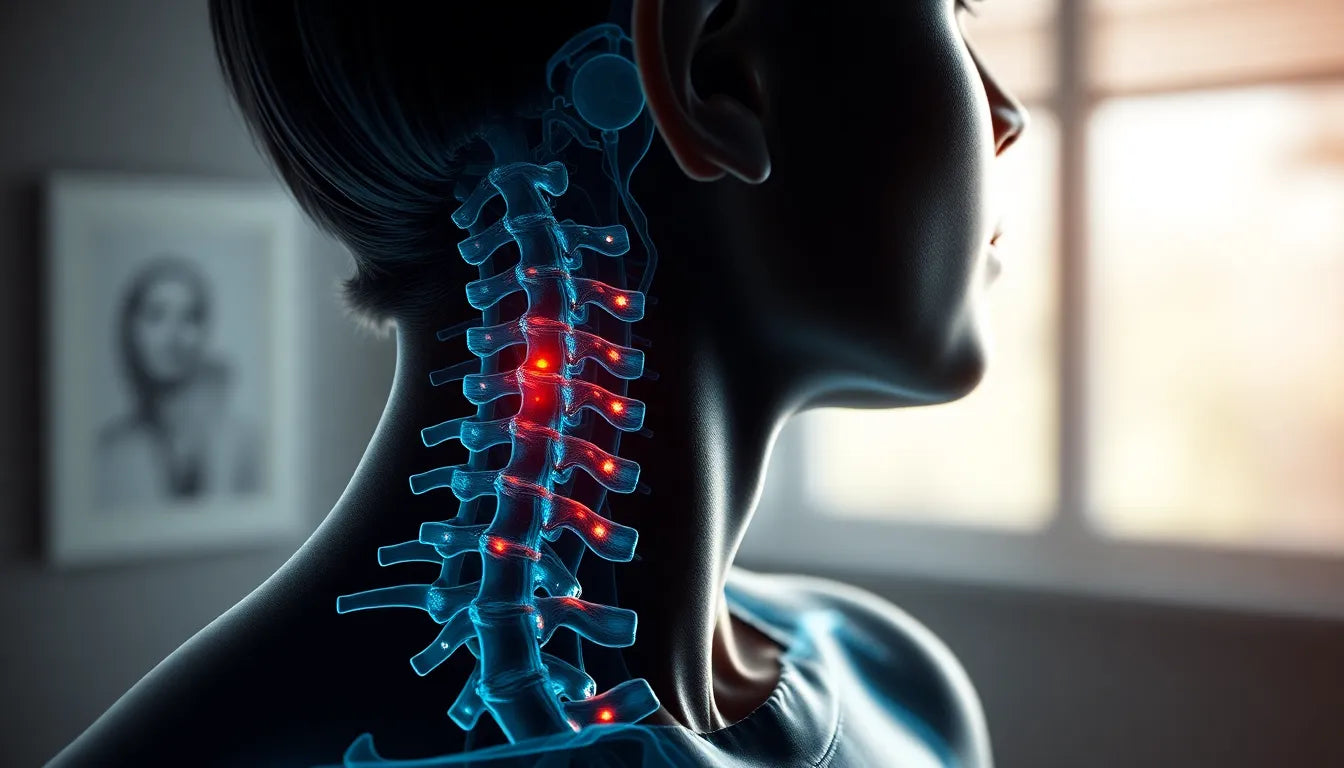A herniated disc in the neck, often referred to as a cervical disc herniation, occurs when the soft, gel-like center of a spinal disc pushes through a crack in the tougher exterior casing. This condition can lead to symptoms such as neck pain, tingling, numbness, and weakness in the arms. These symptoms arise because the herniated disc can press on nearby nerves, causing discomfort and potentially impacting daily activities.
Cervical disc herniations are relatively common, affecting a significant portion of the population at some point in their lives. The prevalence of this condition underscores the importance of understanding its impact on daily life and the necessity of effective treatment options. For those experiencing a herniated disc in the neck, the pain and discomfort can severely limit mobility and reduce quality of life, making it crucial to explore treatments that can alleviate symptoms and restore function.
The importance of timely and appropriate treatment
Ignoring or delaying treatment for a herniated disc in the neck can lead to a progression of symptoms, potentially resulting in chronic pain or permanent nerve damage. The goal of treatment is not only to reduce pain but also to restore function and prevent further complications. Timely intervention can make a significant difference in outcomes, helping individuals return to their normal activities more quickly and with less discomfort.
The focus of this blog is to explore proven treatments for herniated discs in the neck, offering insights into both conservative and surgical options. By understanding these treatments, individuals can make informed decisions about their care, seeking relief and improving their overall quality of life. Whether through medication, physical therapy, or, in more severe cases, surgical intervention, there are various pathways to finding relief from the discomfort and limitations caused by a herniated disc in the neck.
Conservative treatment options: the first line of defense
When dealing with a herniated disc in the neck, conservative treatments are often the first approach to manage symptoms and promote healing. These methods focus on alleviating pain and restoring function without the need for surgical intervention.
NSAIDs and pain management
Non-steroidal anti-inflammatory drugs (NSAIDs) are commonly recommended to help reduce inflammation and manage pain associated with a herniated disc in the neck. These over-the-counter medications can provide significant relief, but it's crucial to consult with a healthcare provider to ensure proper usage and to discuss any potential side effects or interactions with other medications.
Physical therapy
Physical therapy plays a vital role in the conservative management of cervical disc herniations. Techniques such as traction, therapeutic exercises, and electrical stimulation are employed to improve mobility, strengthen neck muscles, and reduce pain. A tailored physical therapy program can help patients regain function and prevent future episodes by focusing on posture correction and ergonomic education.
Epidural steroid injections
For individuals who do not experience sufficient relief from medication and physical therapy, epidural steroid injections may be considered. This procedure involves injecting corticosteroids into the epidural space around the spinal nerves to reduce inflammation and alleviate pain. These injections are typically guided by imaging techniques to ensure accuracy and are usually recommended when other conservative measures have not provided adequate relief.
Activity modifications and lifestyle changes
Modifying daily activities and making lifestyle changes are essential components of managing a herniated disc in the neck. Temporary avoidance of movements and activities that exacerbate symptoms can prevent further irritation of the affected nerves. Additionally, incorporating ergonomic aids, such as supportive chairs and adjustable desks, can help maintain proper posture and reduce strain on the neck during work or leisure activities.
Alternative therapies
While not replacements for conventional treatments, alternative therapies like acupuncture, chiropractic care, and hot/cold therapy can serve as supplementary options for some patients. These methods may offer additional pain relief and relaxation, but it's important to discuss their use with a healthcare provider to ensure they complement the overall treatment plan effectively.
Surgical options: when conservative treatments aren't enough
In cases where conservative treatments fail to provide relief or if severe neurological symptoms are present, surgical intervention may be necessary. Understanding the criteria and options for surgery can help patients make informed decisions about their care.
Criteria for surgery
Surgery is generally considered after 6–12 weeks of unsuccessful conservative treatment. However, immediate surgical intervention may be warranted in cases of severe neurological deficits, such as significant weakness or loss of bladder or bowel control, which indicate urgent nerve compression.
Common surgical procedures
Anterior cervical discectomy and fusion (ACDF)
ACDF is one of the most common surgical procedures for treating herniated discs in the neck. It involves removing the damaged disc and fusing the adjacent vertebrae to stabilize the spine and relieve nerve pressure. Recovery from ACDF typically involves a period of rest followed by rehabilitation to restore function and strength.
Artificial disc replacement
As a newer alternative to ACDF, artificial disc replacement aims to preserve neck mobility by replacing the damaged disc with a prosthetic implant. This procedure is gaining popularity among certain patients due to its potential to maintain a greater range of motion compared to traditional fusion techniques.
Other surgical options
Procedures like posterior cervical discectomy and microdiscectomy are less common but may be considered based on specific anatomical and symptomatic factors. These surgeries are typically reserved for cases where other approaches are not suitable or have failed.
In conclusion, understanding both conservative and surgical treatment options for a herniated disc in the neck is crucial for managing symptoms effectively. By exploring these proven treatments, individuals can make informed decisions about their care, seeking relief and improving their overall quality of life.
Advances in surgical techniques and patient outcomes
Recent advancements in surgical techniques for herniated discs in the neck have significantly improved patient outcomes. Minimally invasive procedures, such as microdiscectomy, have become more common, reducing recovery times and minimizing complications. These techniques allow for smaller incisions, less tissue damage, and quicker rehabilitation, enhancing the overall success rates of surgical interventions. Patients can often expect a faster return to daily activities and a reduction in postoperative discomfort, making surgery a more viable option for those who have not found relief through conservative treatments.
The role of ergonomic aids in recovery and prevention
Ergonomic aids play a crucial role in both the recovery from a herniated disc in the neck and the prevention of future occurrences. Products such as ergonomic chairs, adjustable desks, and supportive pillows can help maintain proper posture and reduce strain on the cervical spine. These aids are designed to support the natural curvature of the neck, minimizing the risk of further injury and facilitating a smoother recovery process. Incorporating ergonomic solutions into daily routines can significantly enhance comfort and promote long-term neck health.
Conclusion: making informed treatment decisions
When dealing with a herniated disc in the neck, making informed treatment decisions is essential for effective management and recovery. It is crucial to consult with healthcare professionals to develop a personalized treatment plan that aligns with individual needs and conditions. By understanding the range of available treatments—from conservative measures like physical therapy and NSAIDs to surgical options such as ACDF and artificial disc replacement—patients can make educated choices about their care. A comprehensive approach that combines conservative and surgical options, when necessary, can lead to optimal outcomes and an improved quality of life.
Frequently Asked Questions
What are the early signs of a herniated disc in the neck?
Common early signs include neck pain, numbness, tingling, and weakness in the arms. These symptoms occur when the herniated disc presses on nearby nerves.
How long does it take to recover from a herniated disc in the neck?
Recovery times can vary. Conservative treatments may take several weeks to show improvement, while surgical recovery depends on the specific procedure performed. Minimally invasive surgeries often result in quicker recovery.
Can lifestyle changes prevent herniated discs?
Yes, maintaining good posture, using ergonomic aids, and staying active can reduce the risk of developing a herniated disc in the neck. Regular exercise and proper body mechanics are key preventive measures.
When should I consider surgery for a herniated disc?
Surgery is typically considered after 6–12 weeks of conservative treatment without improvement or if severe symptoms, such as significant weakness or neurological deficits, occur.
Are there risks associated with surgical treatment?
As with any surgery, there are risks involved. However, advances in surgical techniques have minimized complications, and most patients experience significant relief from symptoms following surgery.


















